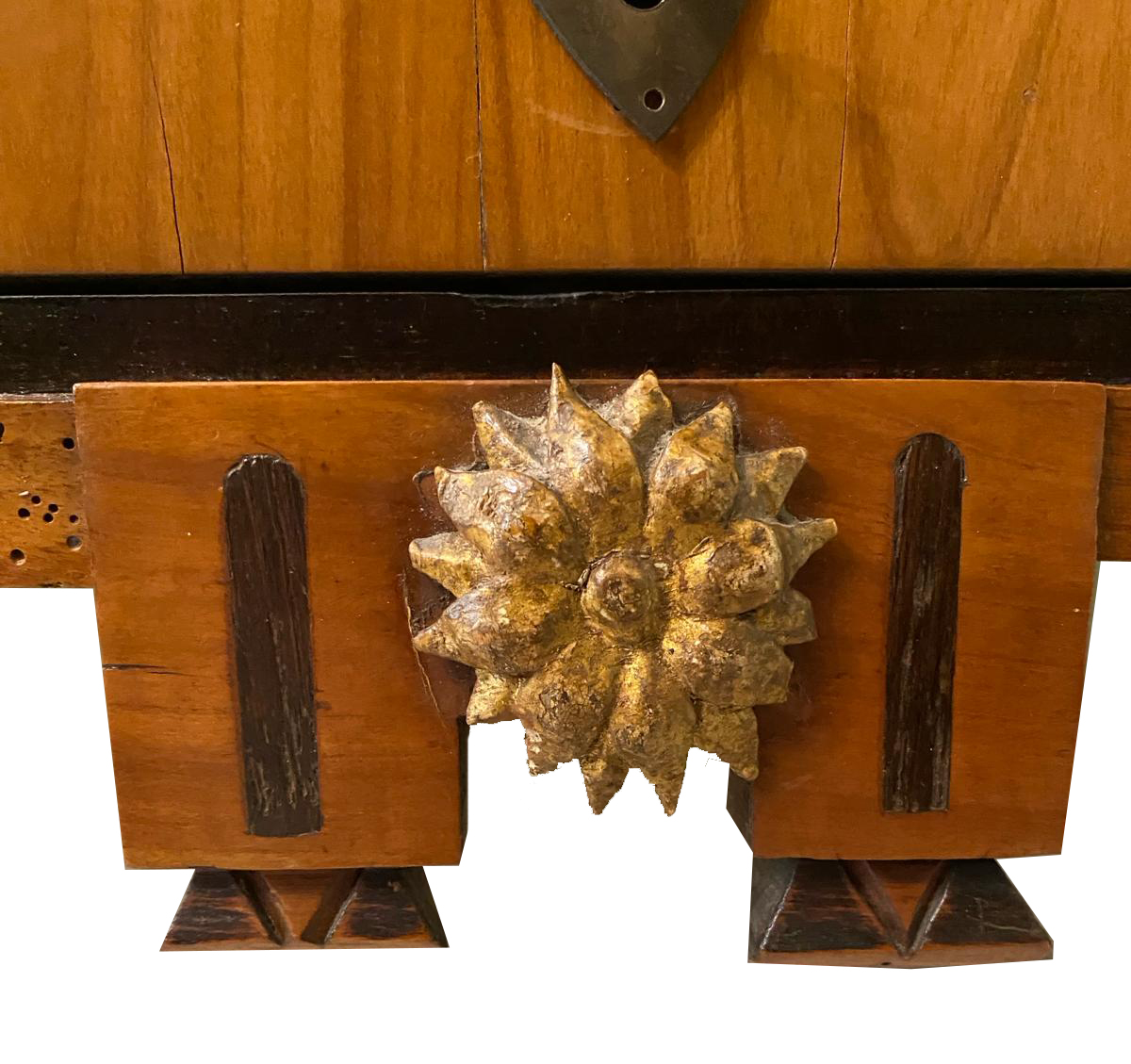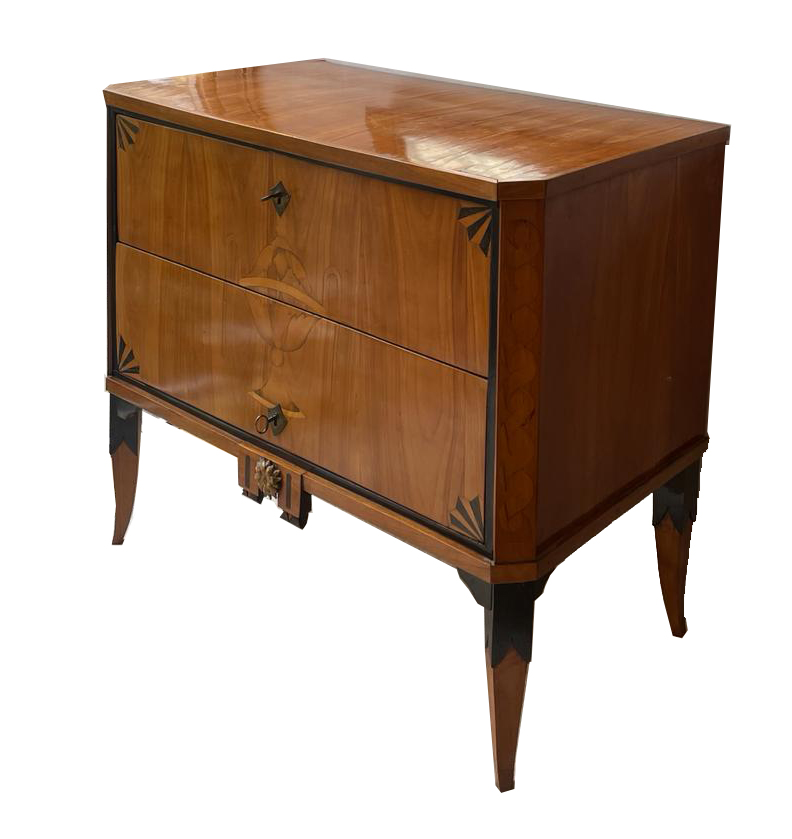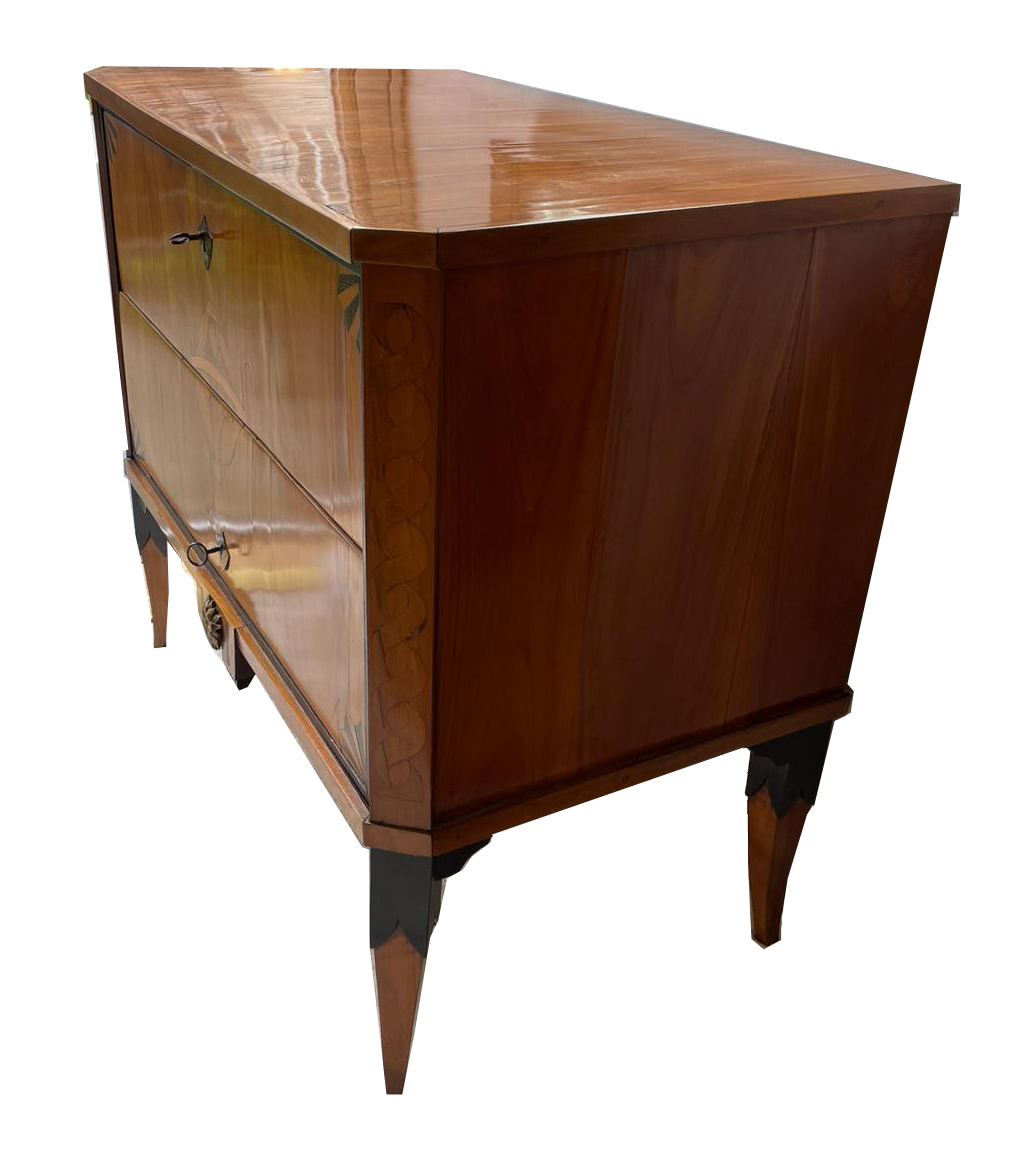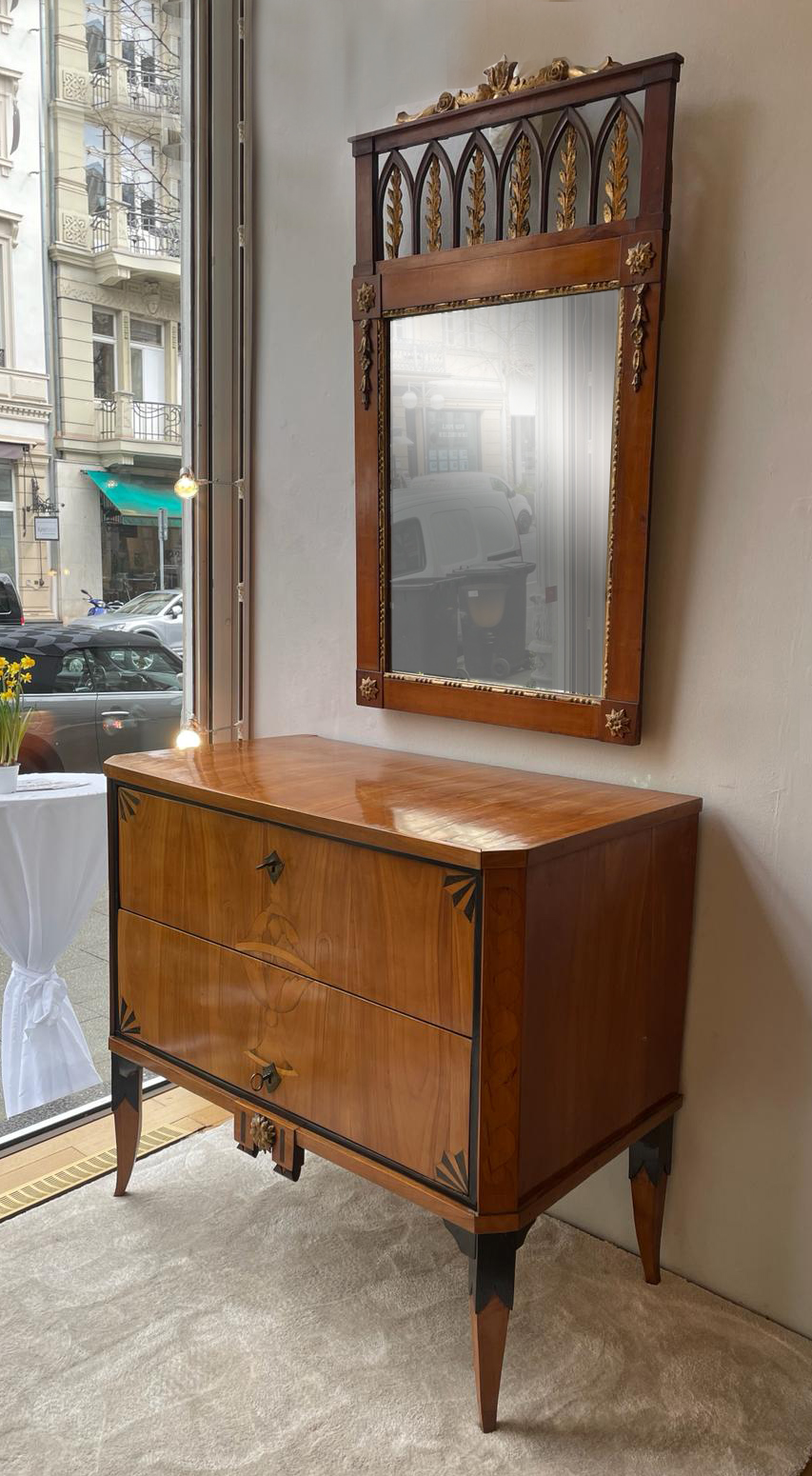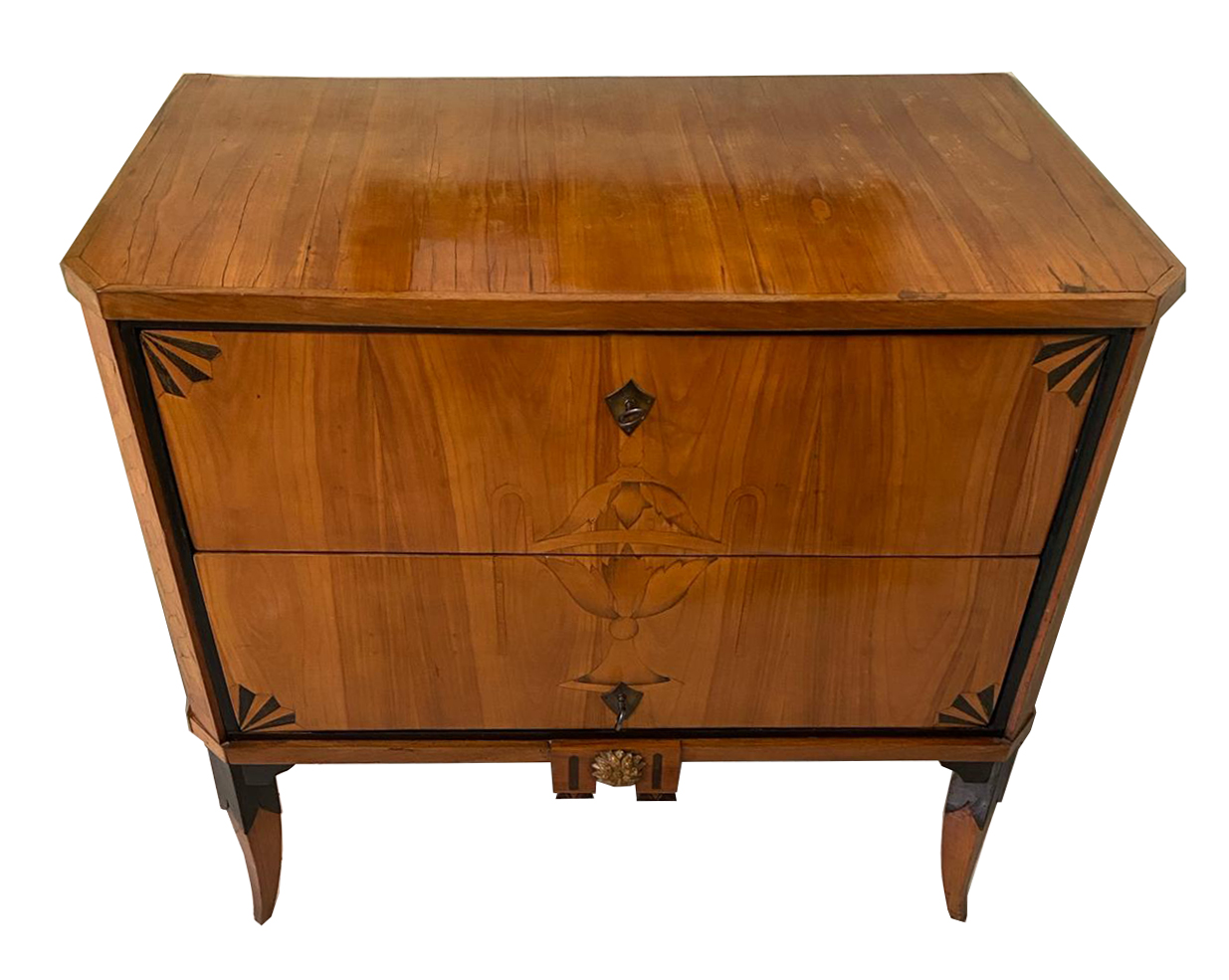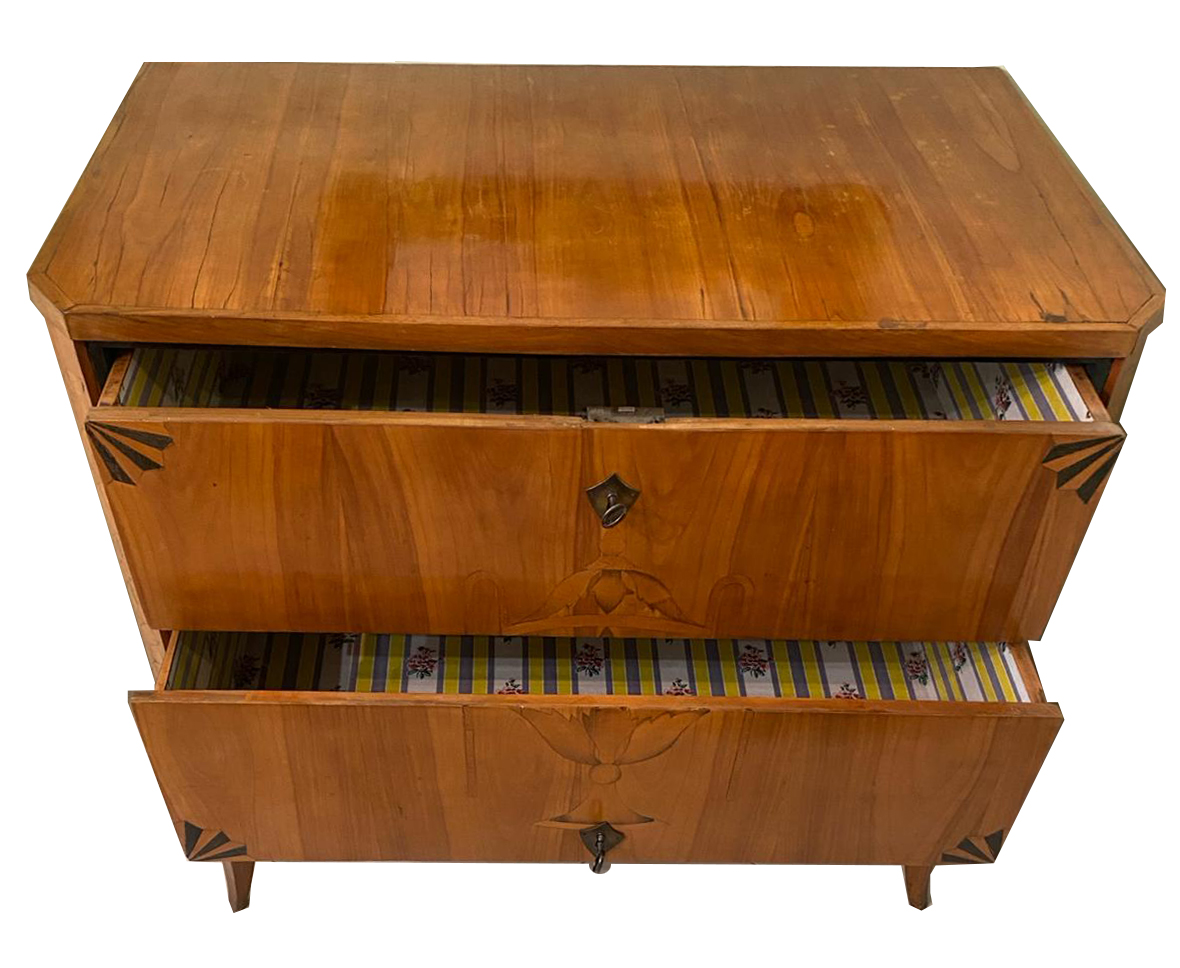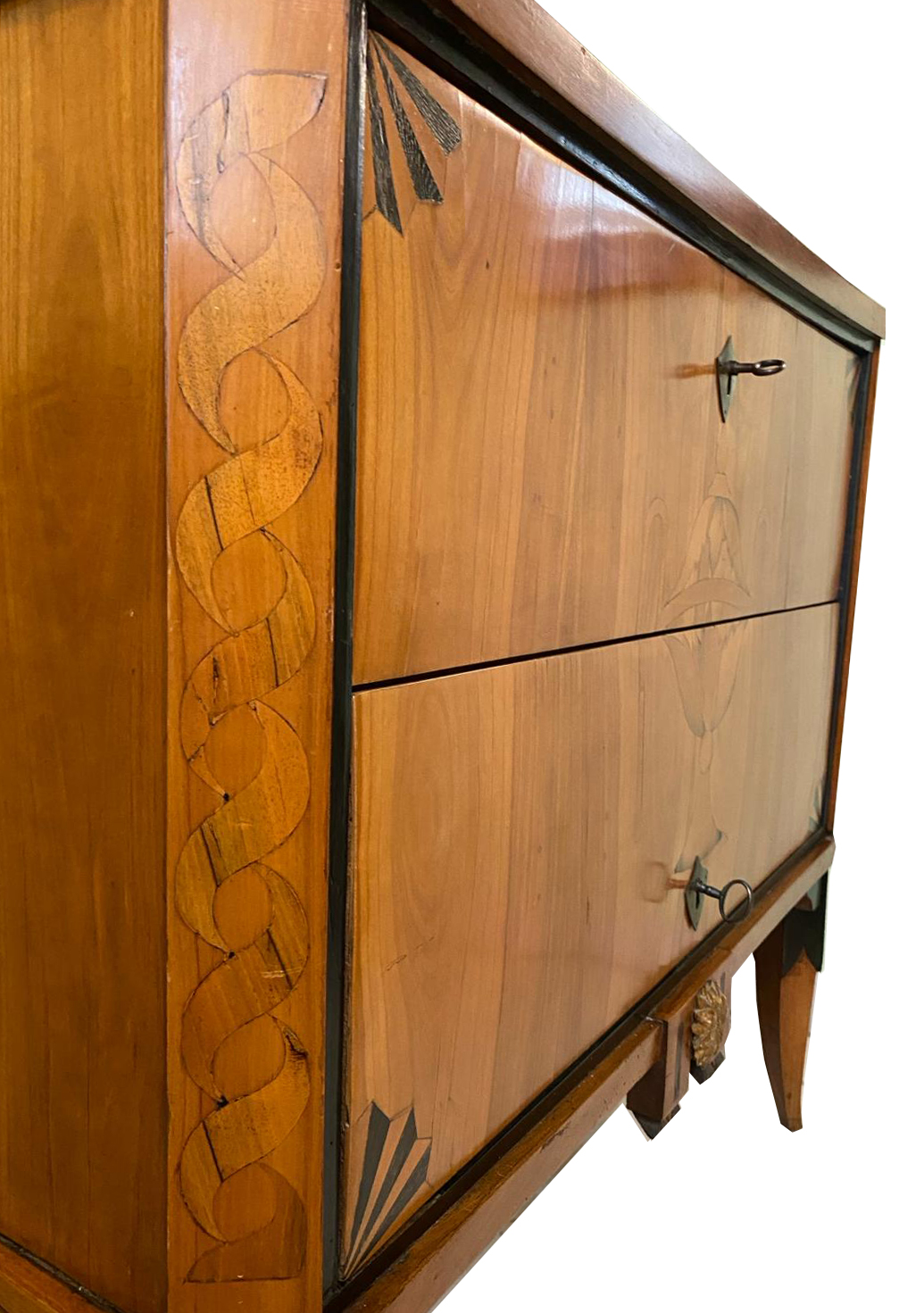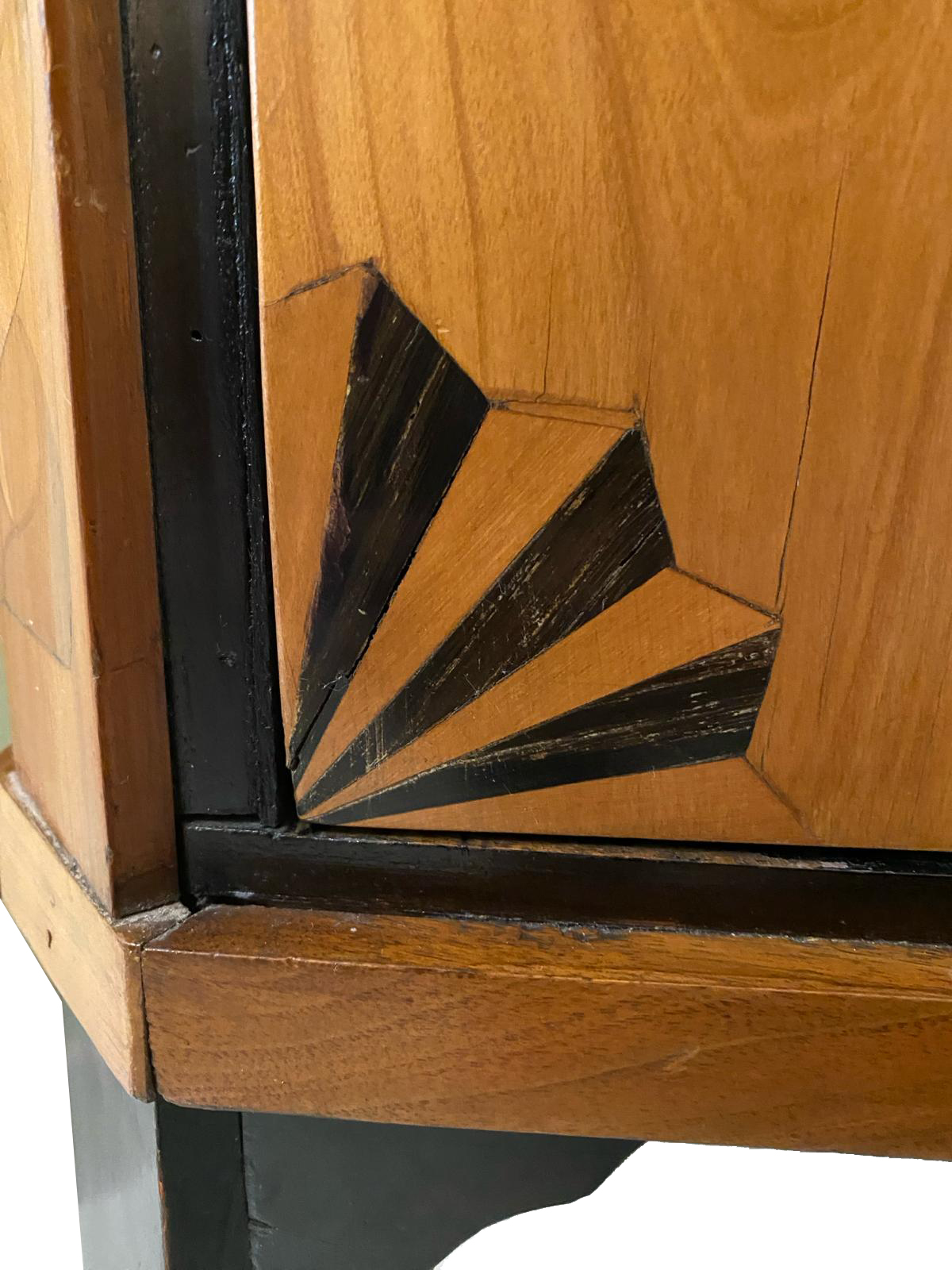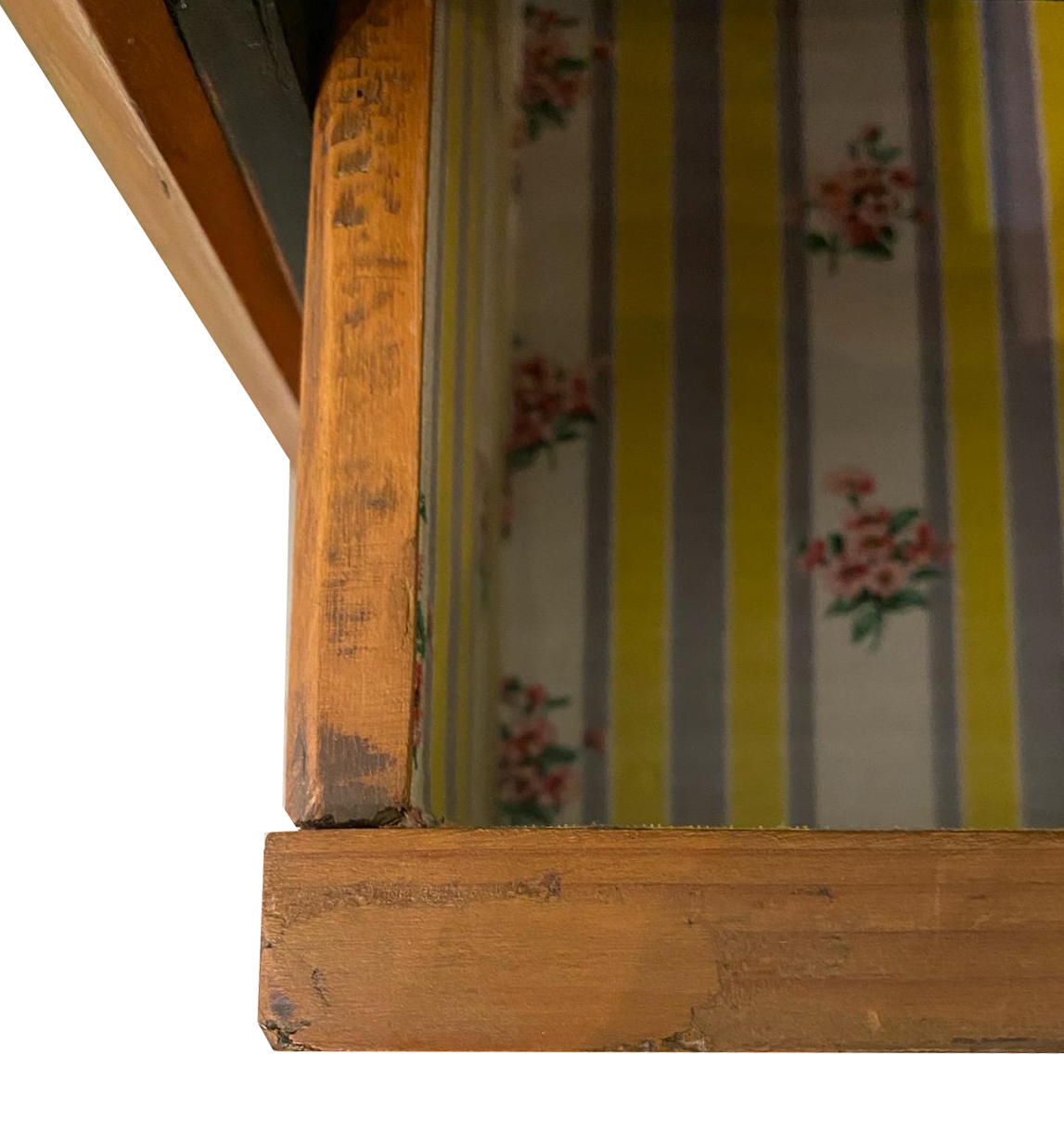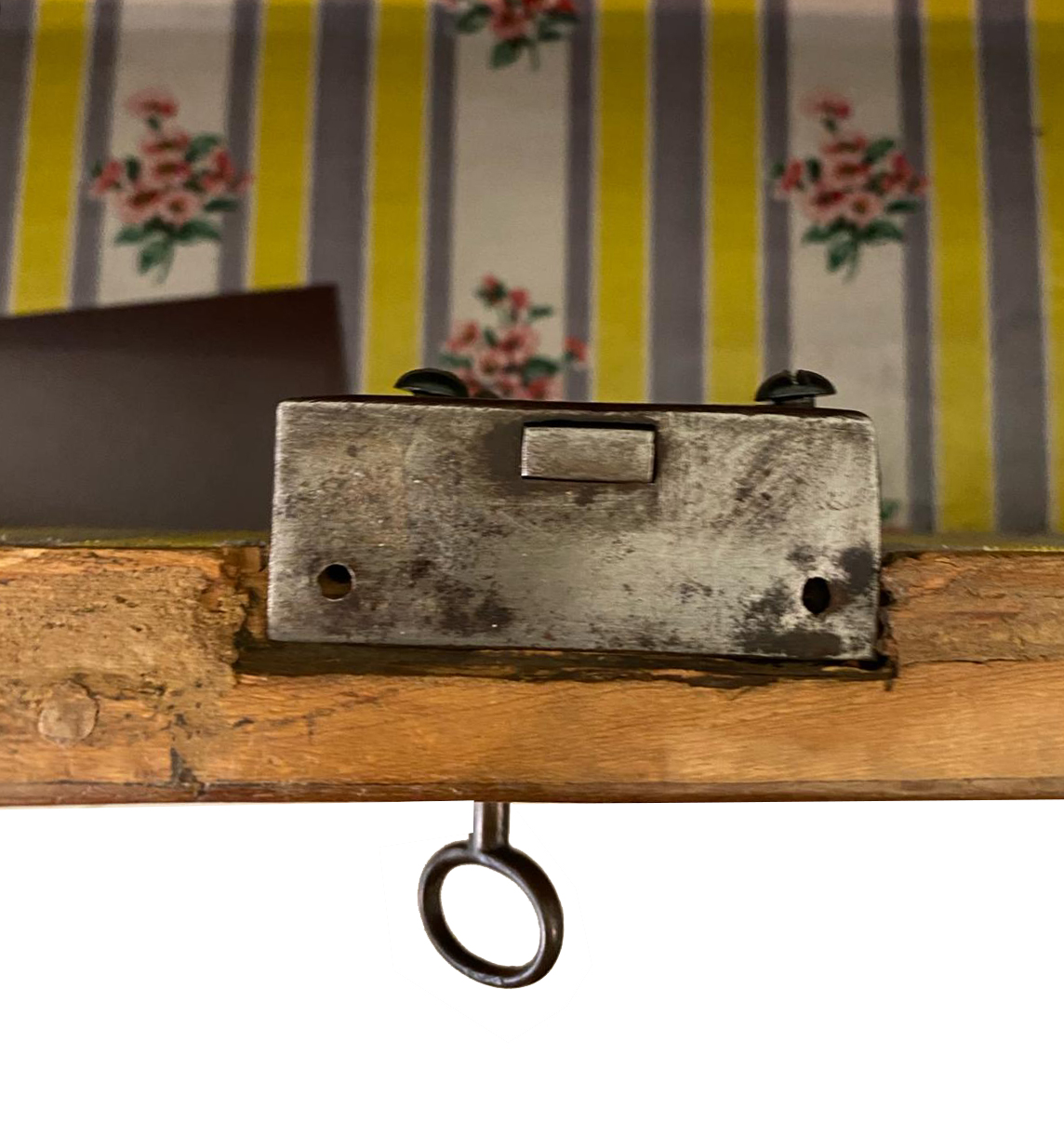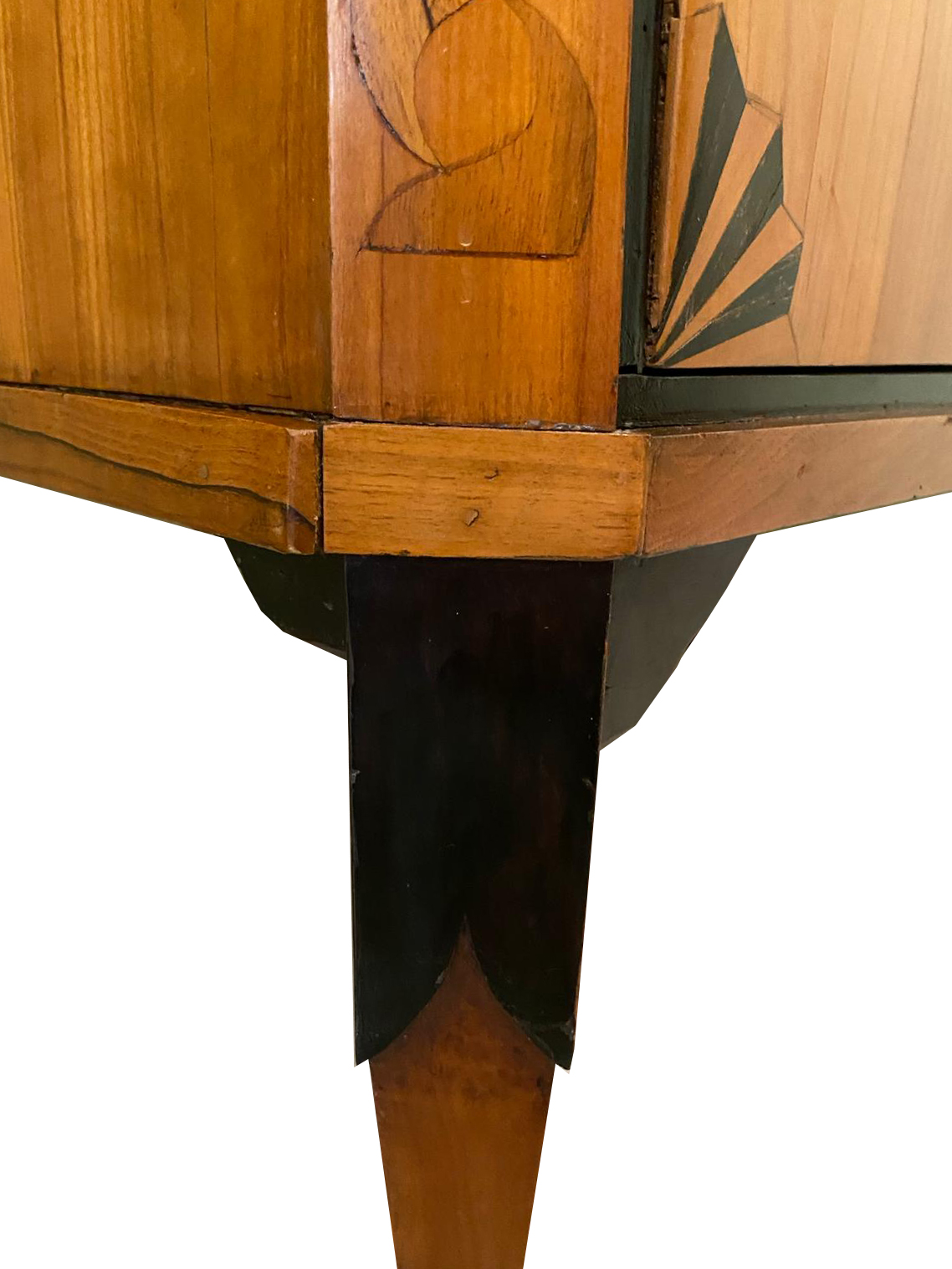Cherry tree chest of drawers classicism
Nr. 2559 | 3.800-- Euro |
Cherry tree chest of drawers classicism
Wörlitz around 1795.
Cherry wood veneered on a softwood body with inlays in dyed bog oak.
Two-drawer body resting on high flared legs with an inlaid amphora vase.
Large original box locks and keys. Gilded carved rosette.
Height: 96 cm | Width: 88 cm | Depth. 55cm
No.2559
Price: € 3,800
(marginal taxation)
Cherry tree chest of drawers classicism
The Classicism cherry tree chest of drawers from Wörlitz, dated around 1795, is an outstanding example of the craftsmanship and design of this period. Crafted from cherry wood veneered onto a softwood body, this chest of drawers is a masterpiece of late 18th century furniture making.
A notable feature of this classicism cherry tree chest of drawers is the inlays in dyed bog oak, which give the piece of furniture an additional sophistication and artistic touch. These inlays demonstrate fine craftsmanship and a flair for detail typical of the artisans of this era.
The two-drawer body rests on high, flared legs, which give the piece of furniture an elegant and airy appearance. The design of the legs and body is typical of the classicist style of this time and reflects the longing for ancient shapes and proportions.
Attention to detail
Another notable detail is the inlaid amphora vase presented on the dresser. This impressive inlay shows the attention to detail and craftsmanship of the furniture designer who created this chest of drawers.
The large, original box locks and keys add to the authenticity and historical value of this chest of drawers, while the gold-plated carved rosette adds a touch of elegance and opulence.
Overall, this neoclassical chest of drawers is an outstanding example of late 18th century furniture making and a charming piece that is not only functional but also a work of art in its own right. Their fine craftsmanship, artistic inlays and elegant design make them a sought-after collector’s item for lovers of antiques and historical furniture design.
Furniture styles of classicism
Louis Seize
The one under Louis XVI. The prevailing style was a conscious departure from Rococo and marked the transition to classicism.
Directoire
Named after the bourgeois decorative style that prevailed between the French Revolution and the Empire of Napoleon I. It stood at the transition between Louise-Seize and Empire and can be understood as a turn against the lavish luxury of the upper class in the Ancient Régime. It was characterized by deliberately austere, sober forms with sparse decoration that were adopted from antiquity.
Empire
Bulky, straight-lined forms and martialistic Greco-Roman and Egyptian elements taken from the Directoire were characteristic
The chest of drawers with this classicist mirror Wörlitz from 1795 is an absolutely perfect pair in terms of time and style.
Classicism and Empire at RSA Wiesbaden
You will find many classical furniture and objects of art from the Empire
in my shop in Wiesbaden. Regine Schmitz-Avila – your classicism and empire specialist for mirrors, tables and art.

